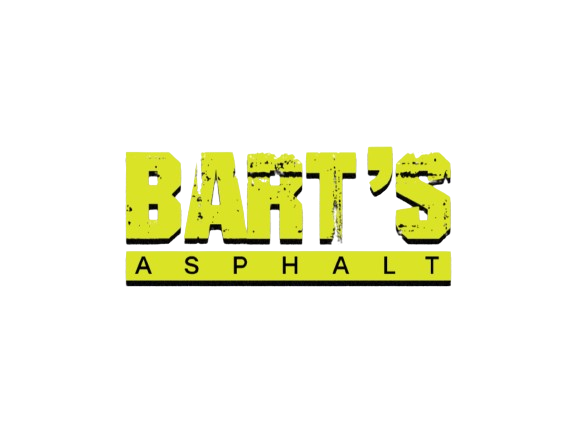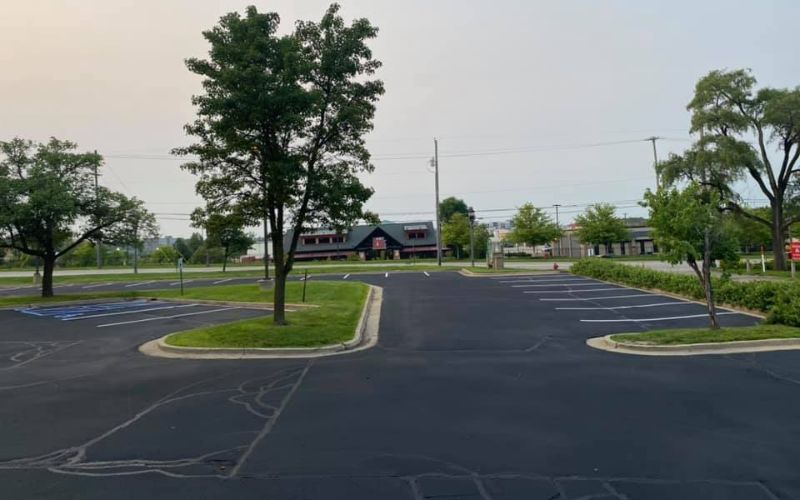Understanding Infrastructure as a Financial Asset
Commercial infrastructure represents a complex financial ecosystem where every square foot carries economic potential. Asphalt surfaces are not merely passive elements but active contributors to business performance, directly influencing operational efficiency, safety, and property valuation. The financial impact of these surfaces extends far beyond their immediate physical presence, touching multiple aspects of business economics.
The true economic value of well-maintained asphalt becomes apparent when analyzing long-term financial trajectories. A strategically maintained surface can potentially extend its functional lifecycle by decades, transforming what might be perceived as a maintenance expense into a significant long-term asset preservation strategy. Professional maintenance becomes a method of capital conservation, protecting millions of dollars in infrastructure investment.
Business leaders increasingly recognize infrastructure maintenance as a critical financial strategy. The modern approach views asphalt not as a static asset but as a dynamic component of overall business performance. Each repair, each preventative treatment represents a calculated financial decision with measurable economic implications.
Cost Analysis of Reactive vs. Proactive Maintenance
The financial mathematics of asphalt maintenance reveal a compelling economic narrative. Comparative analyses consistently demonstrate the profound economic advantages of proactive maintenance strategies. While reactive approaches might seem cost-effective in the short term, they invariably lead to significantly higher expenses over time.
Detailed financial models illustrate stark differences in maintenance approaches:
- Reactive repair costs: $20-$50 per square foot
- Proactive maintenance strategy: $5-$10 per square foot
- Complete pavement replacement: $75-$100 per square foot
These figures represent more than simple numerical comparisons. They tell a story of strategic financial management, where intelligent infrastructure investment can potentially save businesses tens of thousands of dollars over a property’s lifecycle. Proactive maintenance transforms infrastructure from a potential financial liability into a strategic asset.
The economic benefits extend beyond direct repair costs. Businesses that implement comprehensive maintenance strategies typically experience reduced operational disruptions, improved safety records, and enhanced property attractiveness. These intangible benefits translate into measurable economic advantages that compound over time.
Impact on Property Value and Business Performance
Property valuation represents a critical economic consideration that directly correlates with infrastructure maintenance quality. Well-maintained asphalt surfaces can increase property values by 5-15%, a significant economic impact for commercial properties. The visual and functional quality of external surfaces creates critical first impressions that influence customer perceptions and business performance.
Customer experience is intrinsically linked to infrastructure quality. Smooth, well-maintained surfaces communicate professionalism, attention to detail, and operational excellence. For retail businesses, hospitality services, and commercial properties, the parking lot serves as the first point of customer interaction. A pristine surface can enhance brand perception, potentially driving increased customer engagement and loyalty.
Operational efficiency receives a direct boost from strategic infrastructure maintenance. Reduced vehicle wear, improved traffic flow, and minimized operational disruptions contribute to broader economic performance. Businesses can allocate resources more effectively when infrastructure-related challenges are proactively managed.
Industry-Specific Maintenance Considerations
Different commercial sectors in Michigan experience unique infrastructure challenges that demand specialized economic approaches. Manufacturing facilities require robust surfaces capable of withstanding heavy machinery and frequent vehicle traffic. The economic calculus for these properties involves balancing immediate maintenance costs against potential production interruptions.
Retail commercial properties present a different economic landscape. Here, the aesthetic and functional quality of asphalt surfaces directly influences customer perception and potentially impacts sales performance. The investment in maintaining pristine parking areas becomes a marketing strategy with measurable economic returns.
Educational and institutional properties face complex maintenance economics. University campuses and government facilities must balance limited budgetary constraints with the need for comprehensive infrastructure maintenance. Strategic approaches that maximize long-term value while managing short-term expenses become critical.
Insurance and Liability Risk Management
Insurance considerations represent a critical economic dimension of professional asphalt maintenance that extends far beyond surface-level protection. Well-maintained infrastructure serves as a powerful risk mitigation strategy that can substantially reduce potential liability exposures and insurance premium costs for Michigan businesses.
The economic implications of infrastructure-related liability are profound. Poorly maintained surfaces create significant legal and financial risks, including potential personal injury claims, vehicle damage incidents, and workplace safety violations. Professional maintenance transforms these potential financial vulnerabilities into strategic asset protection. Businesses can potentially reduce insurance premiums by 15-25% through demonstrated proactive maintenance approaches.
Different industries experience varying levels of liability risk. Manufacturing facilities with heavy vehicle traffic face more significant potential exposure compared to office complexes. The economic calculation involves balancing maintenance investments against potential legal and insurance-related expenses. A comprehensive maintenance strategy becomes a sophisticated risk management tool that protects both physical infrastructure and financial stability.
Technological Innovations Driving Economic Efficiency
Technological advancements are revolutionizing the economic approach to infrastructure maintenance. Advanced diagnostic technologies now provide unprecedented insights that transform maintenance from a reactive expense to a strategic, predictive investment strategy. Ground-penetrating radar, infrared scanning, and sophisticated monitoring systems enable businesses to anticipate and address potential issues before they become costly problems.
Predictive maintenance technologies represent a quantum leap in economic infrastructure management. These advanced systems can:
- Identify potential structural weaknesses before they become critical
- Provide precise, data-driven maintenance recommendations
- Optimize maintenance scheduling
- Reduce unexpected operational disruptions
- Extend infrastructure lifecycle through targeted interventions
The economic benefits of these technologies extend far beyond immediate maintenance considerations. Businesses can now develop comprehensive long-term infrastructure strategies that transform maintenance from a cost center to a strategic asset management approach. The ability to precisely forecast and plan infrastructure investments represents a fundamental shift in economic thinking.
Environmental and Sustainability Economic Factors
Sustainability has emerged as a critical economic consideration in infrastructure maintenance. Eco-friendly maintenance approaches are no longer simply an environmental responsibility but a sophisticated economic strategy that can generate significant financial benefits for Michigan businesses.
Advanced sustainable maintenance technologies offer multiple economic advantages:
- Reduced long-term environmental impact
- Potential tax incentives and credits
- Lower material and application costs
- Enhanced corporate sustainability profiles
- Improved public perception and brand value
The economic calculus of green infrastructure extends beyond immediate cost considerations. Businesses can leverage sustainable maintenance approaches as a competitive differentiator, potentially attracting environmentally conscious customers and investors. The long-term economic benefits of these approaches can significantly outweigh initial investment costs.
Regional Economic Considerations for Michigan
Michigan’s diverse economic landscape creates unique infrastructure maintenance challenges that require sophisticated, localized approaches. The state’s complex economic ecosystem ranges from urban industrial centers to rural agricultural regions, each presenting distinct infrastructure economic considerations.
Urban commercial corridors in Detroit and Grand Rapids experience different maintenance economics compared to university districts in Ann Arbor or agricultural regions in rural Michigan. Each economic zone demands a nuanced approach that considers local traffic patterns, environmental conditions, and specific industry requirements.
The state’s manufacturing heritage creates unique infrastructure challenges. Industrial corridors require robust maintenance strategies that balance operational efficiency with cost-effective infrastructure management. Universities and government facilities must navigate complex budgetary constraints while maintaining critical infrastructure assets.
Financial Planning and Budgeting Strategies
Strategic financial planning for infrastructure maintenance represents a sophisticated approach to long-term economic management. Businesses must develop comprehensive maintenance budgets that view infrastructure not as an expense but as a critical financial asset with measurable economic potential.
Effective maintenance budgeting involves:
- Comprehensive lifecycle cost assessment
- Predictive maintenance forecasting
- Strategic investment planning
- Flexible budgeting approaches
- Long-term financial modeling
Advanced financial strategies now incorporate sophisticated predictive technologies that allow for more accurate maintenance budgeting. Businesses can develop precise financial models that optimize infrastructure investments, reducing unexpected expenses and maximizing long-term economic performance.
Bart's Asphalt Economic Value Proposition
Our approach to infrastructure maintenance transcends traditional service models, offering a comprehensive economic optimization strategy. We provide more than simple maintenance – we deliver a sophisticated economic partnership that transforms infrastructure from a potential liability into a strategic asset.
Our economic value proposition is built on:
- Hyperlocal Michigan infrastructure expertise
- Advanced diagnostic and predictive technologies
- Customized financial maintenance strategies
- Comprehensive economic impact analysis
- Commitment to client financial success
We understand that each business represents a unique economic ecosystem. Our team works closely with clients to develop tailored maintenance approaches that align with specific financial goals, operational requirements, and long-term strategic objectives.
Bart's Asphalt Approach to Spring Maintenance
Our approach to spring maintenance represents the culmination of decades of local expertise and technological innovation. We go far beyond standard maintenance services, offering a comprehensive infrastructure protection strategy that addresses the unique challenges of Jackson’s commercial properties.
Local knowledge forms the cornerstone of our maintenance methodology. Our team possesses an intimate understanding of Jackson’s specific environmental and structural challenges. This hyperlocal expertise allows us to develop customized maintenance solutions that provide maximum protection and long-term value.
Advanced diagnostic technologies enable us to provide unprecedented insights into pavement condition and maintenance needs. We utilize state-of-the-art assessment tools to create comprehensive maintenance strategies that address both immediate protection requirements and long-term infrastructure preservation.
Conclusion
Professional asphalt maintenance emerges as a sophisticated economic strategy that goes far beyond simple infrastructure preservation. For Michigan businesses, it represents a critical approach to financial asset management, risk mitigation, and long-term value creation.
Frequently Asked Questions
Q: How frequently should our business invest in professional asphalt maintenance?
A: The optimal maintenance frequency varies by industry and usage, but most Michigan businesses benefit from comprehensive assessments annually and targeted maintenance every 2-3 years.
Q: Can professional maintenance really save our business money?
A: Absolutely. Proactive maintenance typically reduces long-term infrastructure costs by 40-60%, preventing expensive complete replacements and minimizing operational disruptions.
Q: What economic factors should we consider in our maintenance strategy?
A: Consider total lifecycle costs, potential operational interruptions, property value impact, safety considerations, and long-term asset preservation when developing your maintenance approach.
Ready to transform your infrastructure into a strategic economic asset? Contact Bart’s Asphalt for a comprehensive economic assessment of your commercial property.


